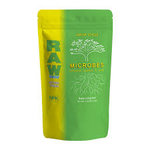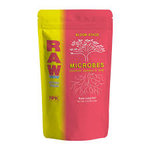Sixty’s
Mame
Being such an important organism to sustain life I often think if it’s something that I I’m overlooking in the care of my trees.
One of the reasons I often look at the subject is mainly by being one of the largest differences between growing a tree in a pot and growing a tree in the ground, the bacterial activity in the ground will be much more diverse and with a full cycle vs the bacteria that will be present in a pot with limited nutrients and a incomplete nitrogen cycle.
Bacillus for example cannot multiply without the presence of organic carbon, this nutrient is excluded from traditional fertilisers. Therefore the heterotrophic bacterial diversity in inorganic soil may be much lower in comparison.
Nitrifying bacteria cannot work without the presence of ammonium usually formed by decaying organic matter, therefore I believe that the nitrogen cycle could be limited in inorganic soils etc…
I believe my main question is: could some trees benefit from a full microbial cycle and this being one of the big differences between growing a tree in the ground Vs in a pot with just inorganic soil and inorganic nutrients?
One of the reasons I often look at the subject is mainly by being one of the largest differences between growing a tree in a pot and growing a tree in the ground, the bacterial activity in the ground will be much more diverse and with a full cycle vs the bacteria that will be present in a pot with limited nutrients and a incomplete nitrogen cycle.
Bacillus for example cannot multiply without the presence of organic carbon, this nutrient is excluded from traditional fertilisers. Therefore the heterotrophic bacterial diversity in inorganic soil may be much lower in comparison.
Nitrifying bacteria cannot work without the presence of ammonium usually formed by decaying organic matter, therefore I believe that the nitrogen cycle could be limited in inorganic soils etc…
I believe my main question is: could some trees benefit from a full microbial cycle and this being one of the big differences between growing a tree in the ground Vs in a pot with just inorganic soil and inorganic nutrients?



